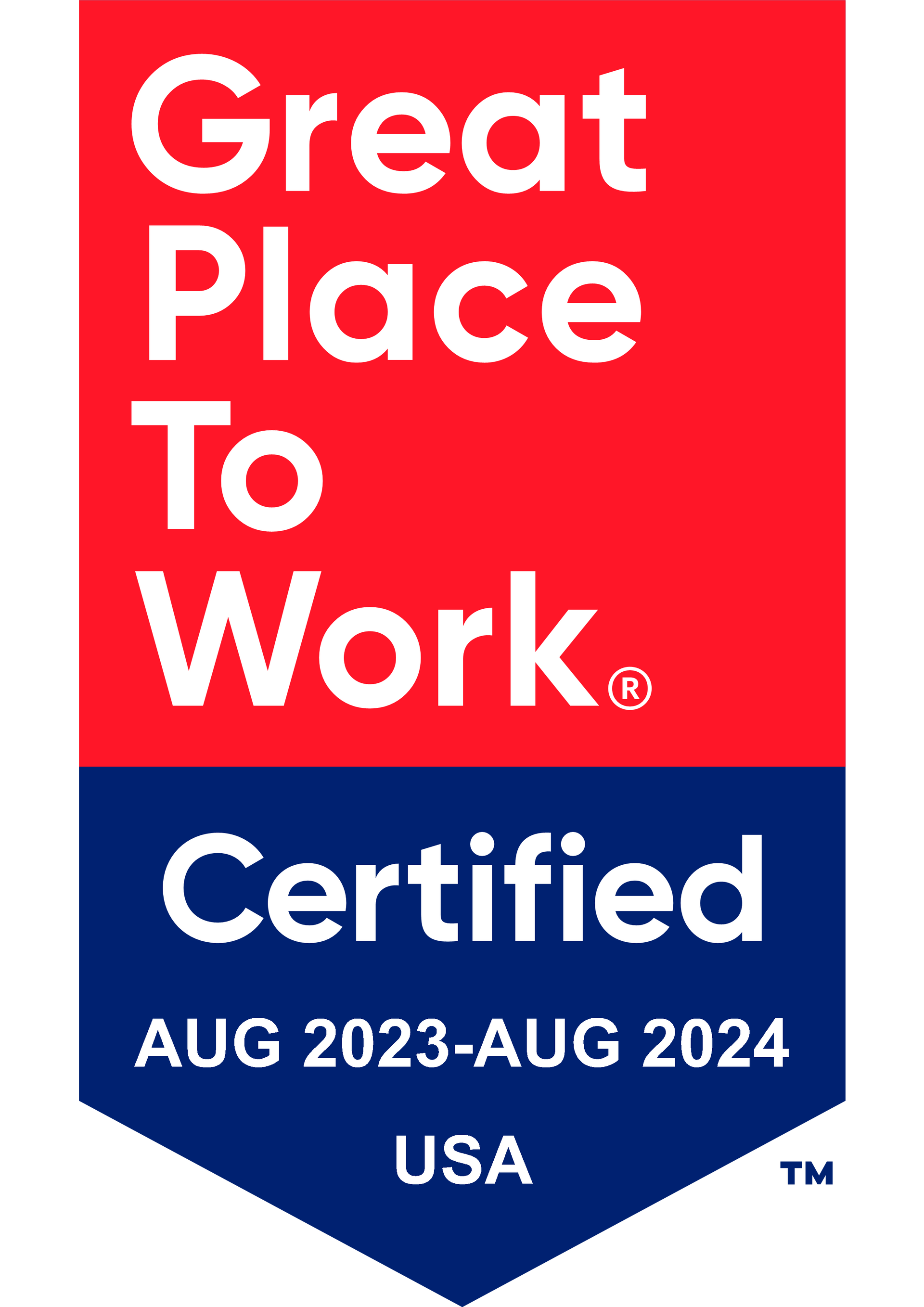Get in touch
408-366-8880
mymail@mailservice.com
Industry Insights

KBI'S Recent Posts

by Chris Freitas
•
11 Apr, 2024
Self-funded health plans represent a departure from traditional fully-insured plans where employers pay a fixed premium to an insurance carrier. Instead, in a self-insured model, employers pay for out-of-pocket claims as they are incurred, often setting aside funds in a trust to cover these expenses. Let’s explore the positives and negatives of this funding model and whether your company could benefit from adopting it. For more personalized assistance with improving your employee benefits ROI, speak with a KBI Benefits agent today. What Are Self-Insured Health Plans? At its core, a self-insured health plan allows an employer to tailor healthcare benefits to the specific needs of its workforce, avoiding the one-size-fits-all approach of traditional insurance policies. This customization is not just about meeting employees' health needs but also about financial management. By directly funding healthcare claims, employers can improve cash flow and save on the premium taxes and margins that insurance carriers typically charge. Furthermore, self-insured plans offer employers the opportunity to retain control over the plan's reserves, potentially earning interest income that would otherwise benefit the insurance carrier. They also allow for greater flexibility in selecting healthcare providers or networks that best match the needs of their employees, providing a potentially higher quality of care. Why Self-Insured Health Plans? The appeal of self-insured plans is underscored by the numbers. A report by the Employee Benefit Research Institute highlighted that a significant portion of the workforce is covered by employer-sponsored self-insured plans. This model is commonly chosen for its numerous advantages, including customizable health care plans, improved cash flow due to the absence of pre-paid premiums, exemption from state health insurance regulations, and savings on state premium taxes. However, the suitability of self-insurance varies by employer. While large employers may comfortably absorb the financial variability of claims, smaller employers or those with less stable cash flows may find self-insuring risky. Despite this, even some small businesses with as few as 25 employees have successfully adopted self-insured health plans, highlighting the model's flexibility. Unsure if this funding model suits your company? Speak with a KBI Benefits agent today to schedule an in-depth audit. Risk Management and Administration One of the critical concerns with self-insuring is the potential for unpredicted or catastrophic claims. To mitigate this, many employers purchase stop-loss insurance , which covers claims exceeding a certain amount. This strategy helps manage risk while still allowing employers to enjoy the benefits of self-insuring. Claims administration is another crucial aspect. Employers may choose to handle it in-house or outsource it to a third-party administrator (TPA). TPAs can offer valuable services in setting up and managing self-insured plans, including coordinating stop-loss insurance and provider networks. Compliance and Employee Contributions Self-insured plans are subject to a range of federal laws, including ERISA, HIPAA, and COBRA. These regulations ensure that plans provide fair and consistent benefits and protect employees' rights. Employee contributions towards their coverage continue to be processed through payroll deductions, maintaining a familiar structure for funding their benefits. The Conclusion: Finding the Right Balance While self-insured health plans offer numerous advantages, they are not suitable for every business. The decision to self-insure should be based on a comprehensive analysis of an employer's financial stability, risk tolerance, and the specific healthcare needs of its workforce. For those considering this path, working with a knowledgeable partner can make all the difference. This is where KBI Benefits comes in. Specializing in developing creative financing models, KBI Benefits can enhance your employee benefits ROI by as much as 40%. By partnering with KBI Benefits, employers can discover the optimal funding structure for their benefits plan, tailored to their unique needs and circumstances. Whether you're looking to transition to a self-insured model or optimize an existing plan, speaking with a KBI Benefits agent today could be the first step towards a more efficient and effective benefits strategy.

by Chris Freitas
•
09 Apr, 2024
Self-funded health plans represent a departure from traditional fully-insured plans where employers pay a fixed premium to an insurance carrier. Instead, in a self-insured model, employers pay for out-of-pocket claims as they are incurred, often setting aside funds in a trust to cover these expenses. Let’s explore the positives and negatives of this funding model and whether your company could benefit from adopting it. For more personalized assistance with improving your employee benefits ROI, speak with a KBI Benefits agent today. What Are Self-Insured Health Plans? At its core, a self-insured health plan allows an employer to tailor healthcare benefits to the specific needs of its workforce, avoiding the one-size-fits-all approach of traditional insurance policies. This customization is not just about meeting employees' health needs but also about financial management. By directly funding healthcare claims, employers can improve cash flow and save on the premium taxes and margins that insurance carriers typically charge. Furthermore, self-insured plans offer employers the opportunity to retain control over the plan's reserves, potentially earning interest income that would otherwise benefit the insurance carrier. They also allow for greater flexibility in selecting healthcare providers or networks that best match the needs of their employees, providing a potentially higher quality of care. Why Self-Insured Health Plans? The appeal of self-insured plans is underscored by the numbers. A report by the Employee Benefit Research Institute highlighted that a significant portion of the workforce is covered by employer-sponsored self-insured plans. This model is commonly chosen for its numerous advantages, including customizable health care plans, improved cash flow due to the absence of pre-paid premiums, exemption from state health insurance regulations, and savings on state premium taxes. However, the suitability of self-insurance varies by employer. While large employers may comfortably absorb the financial variability of claims, smaller employers or those with less stable cash flows may find self-insuring risky. Despite this, even some small businesses with as few as 25 employees have successfully adopted self-insured health plans, highlighting the model's flexibility. Unsure if this funding model suits your company? Speak with a KBI Benefits agent today to schedule an in-depth audit. Risk Management and Administration One of the critical concerns with self-insuring is the potential for unpredicted or catastrophic claims. To mitigate this, many employers purchase stop-loss insurance , which covers claims exceeding a certain amount. This strategy helps manage risk while still allowing employers to enjoy the benefits of self-insuring. Claims administration is another crucial aspect. Employers may choose to handle it in-house or outsource it to a third-party administrator (TPA). TPAs can offer valuable services in setting up and managing self-insured plans, including coordinating stop-loss insurance and provider networks. Compliance and Employee Contributions Self-insured plans are subject to a range of federal laws, including ERISA, HIPAA, and COBRA. These regulations ensure that plans provide fair and consistent benefits and protect employees' rights. Employee contributions towards their coverage continue to be processed through payroll deductions, maintaining a familiar structure for funding their benefits. The Conclusion: Finding the Right Balance While self-insured health plans offer numerous advantages, they are not suitable for every business. The decision to self-insure should be based on a comprehensive analysis of an employer's financial stability, risk tolerance, and the specific healthcare needs of its workforce. For those considering this path, working with a knowledgeable partner can make all the difference. This is where KBI Benefits comes in. Specializing in developing creative financing models, KBI Benefits can enhance your employee benefits ROI by as much as 40%. By partnering with KBI Benefits, employers can discover the optimal funding structure for their benefits plan, tailored to their unique needs and circumstances. Whether you're looking to transition to a self-insured model or optimize an existing plan, speaking with a KBI Benefits agent today could be the first step towards a more efficient and effective benefits strategy.

by Chris Freitas
•
02 Apr, 2024
Employee benefit plan administration is not just an essential HR task, but an essential step in hiring and retaining high quality employees for the best possible ROI. Small business owners understand better than most that a highly optimized value proposition for hiring new employees makes the difference between profitability and unprofitability. This is where the expertise of benefit consulting becomes invaluable, guiding you through the complexities of benefit plan administration and ensuring your business is positioned as an employer of choice. For personalized assistance with an expert, speak with a KBI agent today . Understanding Employee Benefits Administration At its core, employee benefits administration is about crafting and managing the suite of benefits your company offers to its employees. This critical HR function spans evaluating and communicating employee benefits, facilitating benefits enrollment services, and ensuring compliance with relevant legislation, such as ERISA regulations. When done right, your employee benefits administration system fosters employee advocacy, underlining your company’s commitment to your team’s well-being and professional growth. Choosing the Right Benefits Administration System Today's market offers a range of HR benefits platforms, from full-service benefits administration software to specialized online HR portals that streamline enrollment and management of benefits. These systems are pivotal in communicating employee benefits effectively, ensuring every team member understands and appreciates the full value of what's available to them. For small businesses, the assistance of employee benefit brokers like KBI Benefits can be a game-changer. KBI Benefits offers employee benefits consulting services that can tailor a benefits package to your unique business needs, ensuring you’re competitive yet compliant with all HR compliance requirements. The Pillars of Effective Benefits Administration Strategic Decision-Making: The journey begins with deciding which benefits to offer. This involves a deep dive into employee education about the types of benefits that matter most to your team, from health insurance to wellness programs that support their overall well-being. You can learn more about popular employee benefits offerings in this blog . Ensuring Compliance: Navigating the legal landscape, including ERISA compliance, is a task where an ERISA attorney may be invaluable. Their expertise ensures your benefits plan not only meets legal standards but also supports your business goals without unintended liabilities. KBI Benefits stays the forefront of compliance laws so you can focus on running your business. To speak with an ERISA compliance professional, reach out to KBI Benefits today. Employee Engagement: Communicating employee benefits effectively is crucial . An online HR portal can be an excellent tool for this, providing a one-stop-shop for employees to explore their benefits, enroll in new programs, and seek employee claim assistance when needed. Continuous Improvement: Regular HR reporting and feedback from your team will highlight areas for enhancement, whether it's adding new benefits, adjusting existing ones, or improving the way benefits are communicated. How to Get Started with Your Benefit Plan Administration Navigating the intricacies of employee benefit services can be daunting, especially for small businesses without large HR departments. This is where KBI Benefits shines. Our approach to employee benefits consulting services focuses on optimizing your benefits expenditure while maintaining or enhancing the quality of your offerings. By utilizing proprietary funding models and detailed cost reporting, KBI Benefits is uniquely positioned to reduce your benefits costs by as much as 40%. Speak with a KBI Benefits agent today to start strategizing.

by Chris Freitas
•
25 Mar, 2024
Navigating the world of employee benefits can feel like trying to solve a puzzle, especially when you're aiming to balance providing high-quality benefits with managing costs. As business owners wrestle with the rising premiums of group health insurance, the quest for creative financing methods to reduce benefits-related expenditures has never been more critical. However, there's a silver lining in the form of alternative funding options that can help companies, whether they have 25 or 2,500 employees, potentially slash their benefits costs. Here's how you can save money on your employee benefits, keeping both your team and budget happy. How to Save Money on Your Employee Benefits Gone are the days when only the largest corporations could think about stepping away from fully-funded insurance programs towards self-funded options. Thanks to the evolution of the market and the introduction of the Affordable Care Act, a myriad of alternative funding options have emerged. These alternatives provide nearly any business owner the opportunity to explore different funding arrangements based on their financial capacity, objectives, and employee demographics. Alternative Employee Benefit Funding Options Fully-Insured Plans : This traditional route offers the least risk to employers but comes with higher costs. You pay a premium to an insurance carrier for a specified plan, with no financial surprises but also no savings on lower-than-expected claims. Self-Insured Plans : Self-funded employee benefits refer to a system where, instead of paying premiums to an insurance company, an employer directly assumes the financial risk of providing healthcare benefits to its employees. Under this model, the company pays for each claim as it arises, typically setting aside a pool of funds for this purpose. Companies might opt for this financing choice to gain more control over their benefits plan, enjoy potential cost savings, and increase flexibility in plan design. This approach allows businesses to tailor their benefits offerings more closely to the needs of their employees and can lead to significant savings, as they avoid the overhead and profit margins built into traditional insurance premiums. Level Funding : Level funded employee benefits are a hybrid model that combines elements of both fully insured and self-funded insurance plans. In this approach, an employer pays a fixed monthly fee to a third-party administrator or insurance provider, which covers estimated claim costs, administrative fees, and stop-loss insurance. This setup aims to offer the cost-saving and customization benefits of self-funding, with the financial predictability and lower risk of fully insured plans. Captive Funding: Captive funded employee benefits involve companies coming together to form their own insurance company, or "captive," to finance their risks, including employee benefits. This approach allows businesses to pool their resources to self-insure, sharing the risks and rewards of funding their health plans collectively. Companies might opt for captive funding as a strategic choice to gain greater control over insurance costs, benefit from potential savings through reduced insurance overheads and profit margins, and achieve more stable premiums over time. Consortium Funding: Consortium funded employee benefits involve a group of companies coming together to pool their resources and share the risks associated with providing healthcare benefits to their employees. This collective approach allows smaller employers to leverage the buying power and risk-sharing advantages typically available only to larger organizations. Reference-Based Pricing : Reference-based pricing (RBP) for employee benefits is an alternative payment model that sets spending limits on certain medical services. Instead of using traditional insurance networks, employers pay healthcare providers based on a fixed reference point—often a percentage above the Medicare reimbursement rate for the same services. This method aims to contain costs by eliminating the wide variance in pricing for healthcare services and creating price transparency. The Benefits of Being Creative By stepping out of the fully insured comfort zone and exploring alternative funding methods, employers can gain greater control over their benefits plans. This control enables a more tailored approach to benefits that can better meet employees' needs while managing costs effectively. Additionally, alternative funding models can provide more predictability in expenses, avoiding the month-to-month variability that can make budgeting a headache. The Benefits of a Benefits Consultant Saving on employee benefits through alternative funding methods can be complex and daunting, but that's where KBI Benefits comes in. Our clients have saved up to 40% on their employee benefits thanks to our decades of experience in the space and unique approach to analyzing expenditures. Ready to explore how you can provide excellent employee benefits while keeping an eye on your bottom line? Speak with a KBI Benefits representative today.

by Chris Freitas
•
18 Mar, 2024
Navigating the world of employee benefits can feel like trying to solve a puzzle, especially when you're aiming to balance providing high-quality benefits with managing costs. As business owners wrestle with the rising premiums of group health insurance, the quest for creative financing methods to reduce benefits-related expenditures has never been more critical. However, there's a silver lining in the form of alternative funding options that can help companies, whether they have 25 or 2,500 employees, potentially slash their benefits costs. Here's how you can save money on your employee benefits, keeping both your team and budget happy. How to Save Money on Your Employee Benefits Gone are the days when only the largest corporations could think about stepping away from fully-funded insurance programs towards self-funded options. Thanks to the evolution of the market and the introduction of the Affordable Care Act, a myriad of alternative funding options have emerged. These alternatives provide nearly any business owner the opportunity to explore different funding arrangements based on their financial capacity, objectives, and employee demographics. Alternative Employee Benefit Funding Options Fully-Insured Plans : This traditional route offers the least risk to employers but comes with higher costs. You pay a premium to an insurance carrier for a specified plan, with no financial surprises but also no savings on lower-than-expected claims. Self-Insured Plans : Self-funded employee benefits refer to a system where, instead of paying premiums to an insurance company, an employer directly assumes the financial risk of providing healthcare benefits to its employees. Under this model, the company pays for each claim as it arises, typically setting aside a pool of funds for this purpose. Companies might opt for this financing choice to gain more control over their benefits plan, enjoy potential cost savings, and increase flexibility in plan design. This approach allows businesses to tailor their benefits offerings more closely to the needs of their employees and can lead to significant savings, as they avoid the overhead and profit margins built into traditional insurance premiums. Level Funding : Level funded employee benefits are a hybrid model that combines elements of both fully insured and self-funded insurance plans. In this approach, an employer pays a fixed monthly fee to a third-party administrator or insurance provider, which covers estimated claim costs, administrative fees, and stop-loss insurance. This setup aims to offer the cost-saving and customization benefits of self-funding, with the financial predictability and lower risk of fully insured plans. Captive Funding: Captive funded employee benefits involve companies coming together to form their own insurance company, or "captive," to finance their risks, including employee benefits. This approach allows businesses to pool their resources to self-insure, sharing the risks and rewards of funding their health plans collectively. Companies might opt for captive funding as a strategic choice to gain greater control over insurance costs, benefit from potential savings through reduced insurance overheads and profit margins, and achieve more stable premiums over time. Consortium Funding: Consortium funded employee benefits involve a group of companies coming together to pool their resources and share the risks associated with providing healthcare benefits to their employees. This collective approach allows smaller employers to leverage the buying power and risk-sharing advantages typically available only to larger organizations. Reference-Based Pricing : Reference-based pricing (RBP) for employee benefits is an alternative payment model that sets spending limits on certain medical services. Instead of using traditional insurance networks, employers pay healthcare providers based on a fixed reference point—often a percentage above the Medicare reimbursement rate for the same services. This method aims to contain costs by eliminating the wide variance in pricing for healthcare services and creating price transparency. The Benefits of Being Creative By stepping out of the fully insured comfort zone and exploring alternative funding methods, employers can gain greater control over their benefits plans. This control enables a more tailored approach to benefits that can better meet employees' needs while managing costs effectively. Additionally, alternative funding models can provide more predictability in expenses, avoiding the month-to-month variability that can make budgeting a headache. The Benefits of a Benefits Consultant Saving on employee benefits through alternative funding methods can be complex and daunting, but that's where KBI Benefits comes in. Our clients have saved up to 40% on their employee benefits thanks to our decades of experience in the space and unique approach to analyzing expenditures. Ready to explore how you can provide excellent employee benefits while keeping an eye on your bottom line? Speak with a KBI Benefits representative today.

by Chris Freitas
•
11 Mar, 2024
From implementing new technologies to navigating complex regulatory frameworks, the realm of human resources (HR) management demands expertise and adaptability. This is where HR consulting firms step in, offering invaluable assistance to businesses seeking to optimize their HR strategies and cultivate a thriving work culture. Let’s discuss the ways your business could benefit from human resources consultant expertise. How Does a Human Resources Consulting Firm Benefit a Business? HR consulting firms serve as specialized entities that offer tailored solutions to diverse HR-related needs within organizations. Unlike in-house HR departments, these firms bring external expertise and perspective, providing independent insights and innovative approaches to address specific projects or objectives. One of the primary advantages of engaging businesses like KBI Benefits who offer HR consulting services lies in their ability to offer specialized expertise tailored to meet the unique needs of each client. Whether it's HR software implementation, strategic planning, audits, or special projects like mergers and acquisitions, these firms provide a spectrum of services designed to enhance organizational efficiency and effectiveness. Another fundamental aspect of HR consulting is its profound impact on shaping and enhancing the work culture within organizations. By fostering an environment of trust, transparency, and empowerment, KBI Benefits plays a pivotal role in nurturing a positive and productive workplace atmosphere. Here's how: Strategic Talent Management: The HR consultant experts at KBI Benefits collaborate with businesses to develop robust talent management strategies, encompassing recruitment, workforce planning, and employee engagement initiatives. By aligning talent acquisition with organizational goals and values, these strategies ensure the retention and development of top-tier talent, thereby bolstering workforce effectiveness. Diversity, Equity, and Inclusion (DEI) Initiatives: In today's diverse and inclusive work environments, HR experts offer invaluable expertise in DEI initiatives. By integrating diversity and inclusion principles into recruitment, training, and performance management processes, these firms foster a culture of belonging and respect, driving innovation and creativity across the organization. Employee Engagement and Well-being: Comprehensive HR assistance is rooted in thorough research. KBI Benefits prioritizes employee engagement and well-being through comprehensive surveys, assessments, and interventions. By proactively addressing factors influencing job satisfaction and morale, such as workload, recognition, and work-life balance, KBI Benefits enhances employee productivity and retention while mitigating burnout and turnover risks. Change Management and Communication: During periods of organizational change or transformation, HR experts serve as catalysts for effective change management and communication. By facilitating open dialogue, providing transparent information, and offering support mechanisms, these consultants mitigate resistance to change and ensure smooth transitions, thereby fostering resilience and adaptability among employees. Turn to KBI Benefits for Human Resources Consulting With decades of collective experience, KBI Benefits stands out as a premier source of HR consulting committed to empowering businesses with strategic HR solutions. Leveraging a wealth of industry knowledge and a client-centric approach, KBI Benefits helps organizations streamline HR processes, navigate regulatory complexities, and cultivate inclusive work cultures conducive to growth and success. Speak with a KBI Benefits agent today to learn more about our HR consulting services.

by Chris Freitas
•
27 Feb, 2024
In today's competitive job market, attracting and retaining top talent is crucial for small businesses aiming to thrive and grow. While salary is an important factor, offering a comprehensive employee benefits package can significantly enhance a company's ability to recruit and retain skilled employees. But are these benefits worth the investment for small businesses who need to optimize every dollar they’re spending? The short answer: yes, if your plan is to keep expanding your business . Employee benefits not only contribute to building a relationship between the company and its employees, but they also play a pivotal role in driving overall productivity. As small businesses and startups contemplate expanding their teams, understanding the significance of employee benefits becomes imperative. Are Small Business Employee Benefits Worth the Investment? Attracting and Retaining Talent: In a competitive job market, offering a wide range of benefits can give small businesses a competitive edge in attracting top talent. For example, health insurance has become a standard and expected offering among Gen Z particularly. Companies that want to keep up with the competition need to ensure their benefits package offering can compete with companies in their vertical. And now, thanks to KBI Benefits’ alternative funding models , you can stretch your employee benefits budget even farther while maintaining, and in many cases improving, your benefits offering. Improving Employee Productivity: Financial worries can significantly impact employee engagement and productivity. According to a recent survey , employees with severe financial stress can lose up to a month’s worth of workdays every year coping with these concerns. By providing financial benefits and wellness programs, employers can alleviate employee stress and achieve higher productivity levels among their employees. This naturally results in a better relationship between the employee and the company, which boosts loyalty and reduces turnover rates. Employees are more likely to remain with a company that demonstrates employee appreciation by offering comprehensive benefits , which means that you save on costs associated with recruiting and training new hires. Enhancing Employer Brand: All of the above benefits that employee benefits bring to your organization come together to build a positive brand narrative that’s worth its weight in gold. A robust benefits package can contribute to shaping a positive association with the brand, attracting not only potential employees but also customers who value companies that prioritize employee well-being. This positive reputation can further support business growth and success into the foreseeable future. Choosing the Right Benefits When considering employee benefits, small businesses should assess their budget, employee demographics, and industry standards to determine the most suitable offerings. While health insurance remains a cornerstone benefit, employers can also explore additional options such as dental care, vision coverage, life insurance, and retirement plans to meet diverse employee needs. Moreover, offering unique benefits beyond traditional offerings can set small businesses apart and further enhance their appeal to potential employees. These may include backup care options, employee assistance programs (EAPs), pet insurance, wellness initiatives, and flexible work arrangements. If you’re ready to start investing in your business’s growth and your employees’ success, speak with a KBI Benefits agent today for a professional consultation . Partnering with KBI Benefits For small businesses seeking guidance in navigating the complexities of employee benefits and optimizing their offerings, KBI Benefits specializes in providing tailored solutions to businesses of all sizes. With a focus on enhancing employee productivity and job satisfaction, KBI Benefits assists small businesses in designing comprehensive benefits packages that align with their goals and budgetary constraints. Clients have seen savings of up to 40% after our employee benefits consultants optimized their offerings. Speak with a KBI Benefits agent today for a comprehensive consultation of your employee benefits plan.

by Chris Freitas
•
19 Feb, 2024
Navigating the intricate landscape of health insurance plans involves understanding key concepts and weighing various factors to make an informed decision. Among the array of options available, Health Maintenance Organizations (HMOs) and Preferred Provider Organizations (PPOs) stand out as prominent choices. Let's delve into the nuances of these plans to determine which works best for you and your family. HMO vs. PPO: Unpacking the Differences When considering your healthcare coverage, it's crucial to comprehend the differences between HMOs and PPOs. To get started, let’s define a few essential terms related to healthcare. In Network - The most common term you’ll hear is "In-network". “In-network” refers to healthcare providers and facilities that have contracted with your insurance company to provide services at discounted rates. Utilizing in-network providers typically results in lower out-of-pocket costs for the insured individual. PPO Insurance - PPO stands for Preferred Provider Organization. This type of insurance plan offers a network of healthcare providers at negotiated rates. PPOs provide greater flexibility compared to HMOs, allowing individuals to seek care from both in-network and out-of-network providers without requiring referrals. HMO Insurance – HMO stands for Health Maintenance Organization. HMOs generally require you to live in its service area to be eligible for coverage, which allows you to utilize in-network doctors in your area. HMO: Prioritizing Cost Control and Coordination HMOs are structured around cost containment and coordinated care, offering several distinct features: Preferred Care at Home – HMO plans often emphasize preventive care and may offer benefits such as preferred care at home services, promoting overall wellness and cost-effective management of healthcare needs. Primary Care Physician (PCP) - In an HMO, you're required to select a primary care physician who serves as your central point of contact for managing your healthcare needs. Your PCP coordinates all medical services and referrals within the network. Referrals – Accessing specialized care within an HMO network typically necessitates a referral from your PCP. This ensures that your healthcare remains coordinated and cost-effective. PPO: Balancing Flexibility and Affordability PPOs offer greater flexibility at a potentially higher cost, catering to individuals seeking a broader range of options: Benefits Package – PPO plans may include comprehensive benefits packages, encompassing services such as preferred care at home, prescription drug coverage, and access to a wide network of providers. Provider Flexibility – Unlike HMOs, PPOs do not mandate the selection of a primary care physician or require referrals for specialist care. This flexibility allows individuals to directly access healthcare services from both in-network and out-of-network providers. Out-of-Network Coverage – PPOs provide coverage for services obtained from out-of-network providers, albeit at a higher cost to the insured individual. This flexibility expands healthcare options while necessitating careful consideration of associated expenses. KBI Benefits Consulting: Make the Right Decision for You Choosing between an HMO and a PPO requires careful consideration of individual healthcare needs, preferences, and budgetary constraints. This is where benefits consulting services, such as what KBI Benefits offers, can play a pivotal role: Expert Guidance – Benefits consulting professionals offer expertise and guidance in navigating the complexities of health insurance, assisting individuals and employers in selecting the most suitable plan. Tailored Solutions – Through benefits consulting, individuals gain access to tailored solutions that align with their specific requirements, whether it involves preferred care at home services, comprehensive coverage options, or cost-effective plan selections. In conclusion, whether you’re prioritizing cost control and coordination with an HMO or seeking flexibility and provider options with a PPO, individuals can tailor their healthcare coverage to suit their unique needs and preferences. Speak with a KBI Benefits agent today for personalized professional help with choosing your next healthcare plan!

by Chris Freitas
•
12 Feb, 2024
Navigating the intricate landscape of health insurance plans involves understanding key concepts and weighing various factors to make an informed decision. Among the array of options available, Health Maintenance Organizations (HMOs) and Preferred Provider Organizations (PPOs) stand out as prominent choices. Let's delve into the nuances of these plans to determine which works best for you and your family. HMO vs. PPO: Unpacking the Differences When considering your healthcare coverage, it's crucial to comprehend the differences between HMOs and PPOs. To get started, let’s define a few essential terms related to healthcare. In Network - The most common term you’ll hear is "In-network". “In-network” refers to healthcare providers and facilities that have contracted with your insurance company to provide services at discounted rates. Utilizing in-network providers typically results in lower out-of-pocket costs for the insured individual. PPO Insurance - PPO stands for Preferred Provider Organization. This type of insurance plan offers a network of healthcare providers at negotiated rates. PPOs provide greater flexibility compared to HMOs, allowing individuals to seek care from both in-network and out-of-network providers without requiring referrals. HMO Insurance – HMO stands for Health Maintenance Organization. HMOs generally require you to live in its service area to be eligible for coverage, which allows you to utilize in-network doctors in your area. HMO: Prioritizing Cost Control and Coordination HMOs are structured around cost containment and coordinated care, offering several distinct features: Preferred Care at Home – HMO plans often emphasize preventive care and may offer benefits such as preferred care at home services, promoting overall wellness and cost-effective management of healthcare needs. Primary Care Physician (PCP) - In an HMO, you're required to select a primary care physician who serves as your central point of contact for managing your healthcare needs. Your PCP coordinates all medical services and referrals within the network. Referrals – Accessing specialized care within an HMO network typically necessitates a referral from your PCP. This ensures that your healthcare remains coordinated and cost-effective. PPO: Balancing Flexibility and Affordability PPOs offer greater flexibility at a potentially higher cost, catering to individuals seeking a broader range of options: Benefits Package – PPO plans may include comprehensive benefits packages, encompassing services such as preferred care at home, prescription drug coverage, and access to a wide network of providers. Provider Flexibility – Unlike HMOs, PPOs do not mandate the selection of a primary care physician or require referrals for specialist care. This flexibility allows individuals to directly access healthcare services from both in-network and out-of-network providers. Out-of-Network Coverage – PPOs provide coverage for services obtained from out-of-network providers, albeit at a higher cost to the insured individual. This flexibility expands healthcare options while necessitating careful consideration of associated expenses. KBI Benefits Consulting: Make the Right Decision for You Choosing between an HMO and a PPO requires careful consideration of individual healthcare needs, preferences, and budgetary constraints. This is where benefits consulting services, such as what KBI Benefits offers, can play a pivotal role: Expert Guidance – Benefits consulting professionals offer expertise and guidance in navigating the complexities of health insurance, assisting individuals and employers in selecting the most suitable plan. Tailored Solutions – Through benefits consulting, individuals gain access to tailored solutions that align with their specific requirements, whether it involves preferred care at home services, comprehensive coverage options, or cost-effective plan selections. In conclusion, whether you’re prioritizing cost control and coordination with an HMO or seeking flexibility and provider options with a PPO, individuals can tailor their healthcare coverage to suit their unique needs and preferences. Speak with a KBI Benefits agent today for personalized professional help with choosing your next healthcare plan!
Services
Latest Thinking

by Chris Freitas
•
11 Apr, 2024
Self-funded health plans represent a departure from traditional fully-insured plans where employers pay a fixed premium to an insurance carrier. Instead, in a self-insured model, employers pay for out-of-pocket claims as they are incurred, often setting aside funds in a trust to cover these expenses. Let’s explore the positives and negatives of this funding model and whether your company could benefit from adopting it. For more personalized assistance with improving your employee benefits ROI, speak with a KBI Benefits agent today. What Are Self-Insured Health Plans? At its core, a self-insured health plan allows an employer to tailor healthcare benefits to the specific needs of its workforce, avoiding the one-size-fits-all approach of traditional insurance policies. This customization is not just about meeting employees' health needs but also about financial management. By directly funding healthcare claims, employers can improve cash flow and save on the premium taxes and margins that insurance carriers typically charge. Furthermore, self-insured plans offer employers the opportunity to retain control over the plan's reserves, potentially earning interest income that would otherwise benefit the insurance carrier. They also allow for greater flexibility in selecting healthcare providers or networks that best match the needs of their employees, providing a potentially higher quality of care. Why Self-Insured Health Plans? The appeal of self-insured plans is underscored by the numbers. A report by the Employee Benefit Research Institute highlighted that a significant portion of the workforce is covered by employer-sponsored self-insured plans. This model is commonly chosen for its numerous advantages, including customizable health care plans, improved cash flow due to the absence of pre-paid premiums, exemption from state health insurance regulations, and savings on state premium taxes. However, the suitability of self-insurance varies by employer. While large employers may comfortably absorb the financial variability of claims, smaller employers or those with less stable cash flows may find self-insuring risky. Despite this, even some small businesses with as few as 25 employees have successfully adopted self-insured health plans, highlighting the model's flexibility. Unsure if this funding model suits your company? Speak with a KBI Benefits agent today to schedule an in-depth audit. Risk Management and Administration One of the critical concerns with self-insuring is the potential for unpredicted or catastrophic claims. To mitigate this, many employers purchase stop-loss insurance , which covers claims exceeding a certain amount. This strategy helps manage risk while still allowing employers to enjoy the benefits of self-insuring. Claims administration is another crucial aspect. Employers may choose to handle it in-house or outsource it to a third-party administrator (TPA). TPAs can offer valuable services in setting up and managing self-insured plans, including coordinating stop-loss insurance and provider networks. Compliance and Employee Contributions Self-insured plans are subject to a range of federal laws, including ERISA, HIPAA, and COBRA. These regulations ensure that plans provide fair and consistent benefits and protect employees' rights. Employee contributions towards their coverage continue to be processed through payroll deductions, maintaining a familiar structure for funding their benefits. The Conclusion: Finding the Right Balance While self-insured health plans offer numerous advantages, they are not suitable for every business. The decision to self-insure should be based on a comprehensive analysis of an employer's financial stability, risk tolerance, and the specific healthcare needs of its workforce. For those considering this path, working with a knowledgeable partner can make all the difference. This is where KBI Benefits comes in. Specializing in developing creative financing models, KBI Benefits can enhance your employee benefits ROI by as much as 40%. By partnering with KBI Benefits, employers can discover the optimal funding structure for their benefits plan, tailored to their unique needs and circumstances. Whether you're looking to transition to a self-insured model or optimize an existing plan, speaking with a KBI Benefits agent today could be the first step towards a more efficient and effective benefits strategy.


